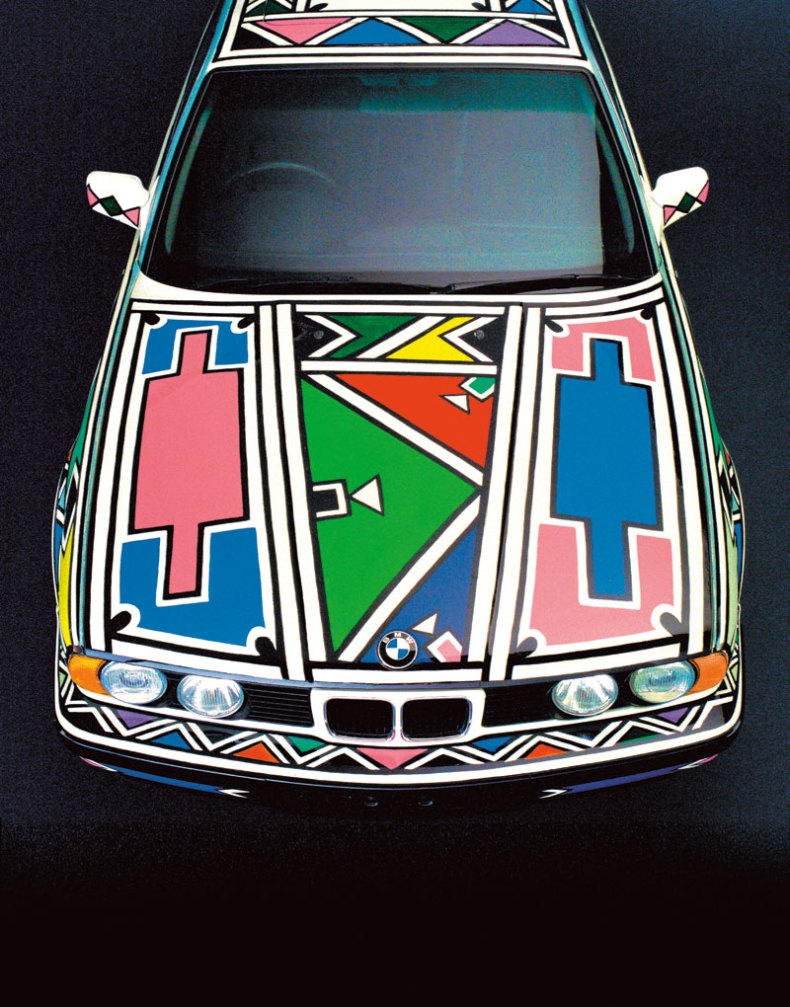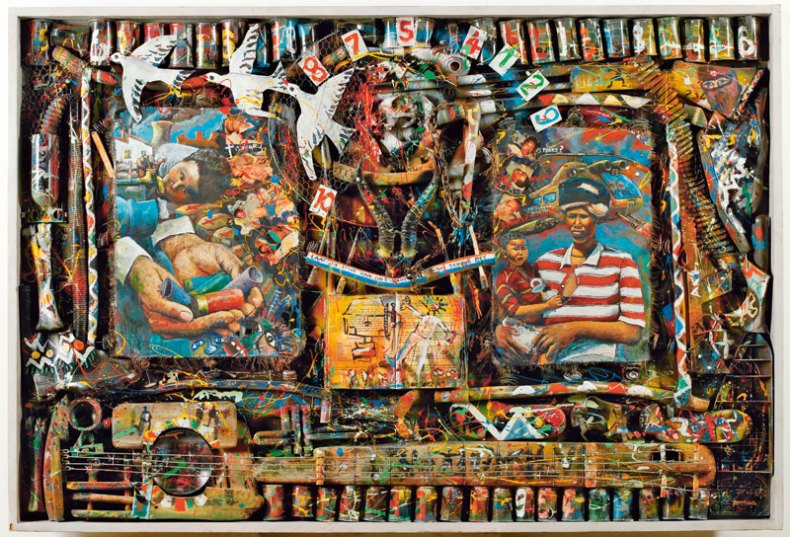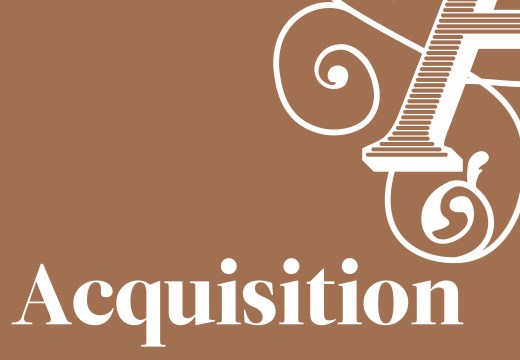On Cape Town’s Victoria & Albert Waterfront, the British designer Thomas Heatherwick has been hollowing out a historic grain silo complex to create what will be the largest museum to open in Africa for over a century. The Zeitz Museum of Contemporary African Art (Zeitz MOCAA), now in its final phase of construction, is what many South Africans have been waiting for. Mark Coetzee, its executive director and chief curator, sums up their feelings when he describes it as ‘a symbol, an icon, of the confidence we feel about being African’. It is also the clearest evidence to date of South Africa creating world-class infrastructure and the conditions to become a truly global hub and marketplace for continental African art.
The four-year project will yield 6,000 square metres of gallery space over nine floors and 3,500 square metres of site-specific exhibition spaces. A new hotel, the Silo, sits atop the museum and will open in March. Most importantly, the museum’s core holding will be businessman Jochen Zeitz’s outstanding collection of contemporary African art; the new institution certainly has the potential to cement the collection’s status as the market maker against which all other collections with this focus will be measured.
What South Africa’s Standard Bank Corporate Art Collection did for the reputation of Irma Stern – currently the country’s most expensive artist – from the end of the 1970s, with the establishment of its own gallery (the Standard Bank Gallery) in Johannesburg to champion South African art in 1990, Zeitz MOCAA is likely to do for others. As with other influential galleries across the world, the public standing of the Zeitz collection, and the kudos that lends the artists included within it, together with the internationally established names that they will rub shoulders with – Chris Ofili and Marlene Dumas, for example – points to it having a leading role as a tastemaker for other collectors.

BMW Art Car 12 (detail; 1991), Esther Mahlangu. © Esther Mahlangu. Photo © BMW Group Archives
A strong interface between the institution and collectors should create more market potential locally, as well as increasing the South African market’s global reach. Long-established local collectors, auction houses and galleries who have focused more on traditional South African art in the past are already paying homage to new stars such as Athi-Patra Ruga and Phillemon Hlungwani, which augurs well for a healthy local market. Evidence of Zeitz MOCAA’s ability to attract visitors from other continents is already apparent, with travel agents in the Cape noting significantly higher bookings for 2017 – especially from the US – which a number attribute directly to the new museum.
The Cape Town Art Fair has expanded, moving from the Waterfront to the much bigger Cape Town International Convention Centre nearby. Displaying pan-African Contemporary art, its stated aims include showcasing new trends, exposing collectors to new artists and, perhaps most interesting of all, adapting the best international practices to build and sustain an economic platform for the art market. Meanwhile Johannesburg has seen the establishment of a new arts district, the Keyes Art Mile, where the galleries include an outpost of the leading Cape Town contemporary art gallery, SMAC Gallery.
The country’s top galleries, such as the Goodman Gallery and 34FineArt in Cape Town, Gallery MOMO in Johannesburg, and the Stevenson Gallery in both cities, are now expanding their remits in pan-African art and can attract artists because of the relative political and economic stability of South Africa, as well as its more reliable infrastructure than elsewhere on the continent. Nigeria, Ghana and the Côte D’Ivoire have proved stable enough in recent years to allow their own burgeoning arts scenes to flourish, and their leading artists have proved the standard bearers for contemporary African art elsewhere. Angola, Mali, Zimbabwe, Benin and Mozambique are also on the rise. But it is in South Africa that many practitioners are realising their dreams. Zeitz MOCAA sits at the centre of all this, creating an unprecedented energy for change and expansion, its focus looking well beyond South Africa to the continent’s other leading Contemporary art centres.

Transition (1994), Willie Bester. © The artist
It is hardly surprising that these changes have also caught the imagination of the art world beyond Cape Town and Johannesburg. Franschhoek, east of Cape Town in wine country, is a wealthy town of traditional whitewashed Dutch homesteads, already established as a gastronomic destination. Now, though, it’s contemporary African art whetting the appetite as dealers and collectors congregate. What’s happening there is a microcosm of the wider South African art scene.
Jeremy Astfalck runs the Old Corkscrew, a specialist silver dealership in Franschhoek, but has diversified into contemporary and traditional African art over the past few years and is one South African dealer who can be seen standing regularly at established UK fairs like Olympia and LAPADA in London. He believes that a number of the potential stumbling blocks to South Africa developing as a global contemporary art centre – the rand, politics, geography – will actually turn out to be advantages. ‘The exchange rate means you can purchase art at a “discount” when compared to other first world countries,’ he says. ‘The political instability led to anti-Apartheid art and now sees the rise of art focusing on the current political dispensation. […] A lot of great art finds its way down Africa and into our galleries, especially in Cape Town where the SAADA Expo [the national dealer association’s fair] has the ability to bring all this together under one roof.’ Just up the road from the Old Corksrew one can find Is Art, showcasing South African art and collectables, while local wine producer Migo Manz has a dedication to art that stretches to naming his son Rothko and promoting South African and contemporary African art on manzart.com (launching soon), an extension of the impressive Holden Manz Collection.
Of course, the South African domestic market is not the only place looking to take contemporary African art truly global; and the rapid growth of this field elsewhere looks set to further bolster its presence and profile in South Africa. London and other European capitals already have galleries dedicated to contemporary African art, such as the Jack Bell Gallery in St James’s, and the Gallery of African Art in Mayfair. Events such as 1:54, the contemporary African art and photography fair that now runs in New York and London each year, attract many collectors and command major coverage in the media. Bonhams, which has enjoyed a virtual monopoly at auction for South African and contemporary African art in London for more than a decade under Giles Peppiatt, now faces a rival in Sotheby’s, who recently poached his deputy, Hannah O’Leary, to set up a department in London. Phillips, too, are openly preparing to makes moves on the pan-African market. Arnold Lehman, former director of the Brooklyn Museum, made a very public visit to the Cape on their behalf earlier in the year.
The current exhibition at the British Museum, ‘South Africa: Art of a Nation’ (until 26 February 2017), is exactly the sort of show to burnish the credentials of the country’s art and its standing in promoting the art of the continent. The timing could hardly be better for Zeitz MOCAA. All the same, there will be challenges ahead: the decision to prosecute the country’s Finance Minister, Pravin Gordhan, for fraud, led to a further decline in the already weak rand in October, and has undoubtedly undermined confidence. The future success of the nation’s art market, whether tapping into local talent or looking to the global scene, is inextricably tied in with the need to eradicate corruption on the political stage and establish long-term stability. If it can do that, with Zeitz MOCAA primed to open in autumn 2017, then the time is ripe for pan-African artists to burst onto the world stage as never before – and Cape Town shows all the potential for being the catalyst.
From the November issue of Apollo. Preview and subscribe here.
Visit Apollo Collector Services for the best information and advice about managing an art collection.
Unlimited access from just $16 every 3 months
Subscribe to get unlimited and exclusive access to the top art stories, interviews and exhibition reviews.














![Masterpiece [Re]discovery 2022. Photo: Ben Fisher Photography, courtesy of Masterpiece London](http://zephr.apollo-magazine.com/wp-content/uploads/2022/07/MPL2022_4263.jpg)
The threat to Sudan’s cultural heritage